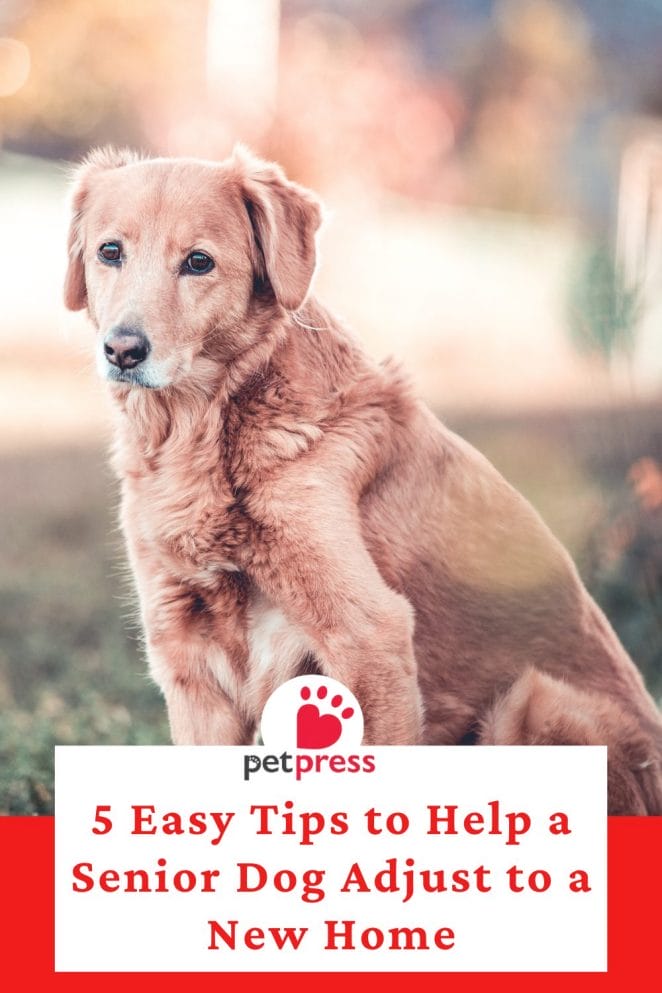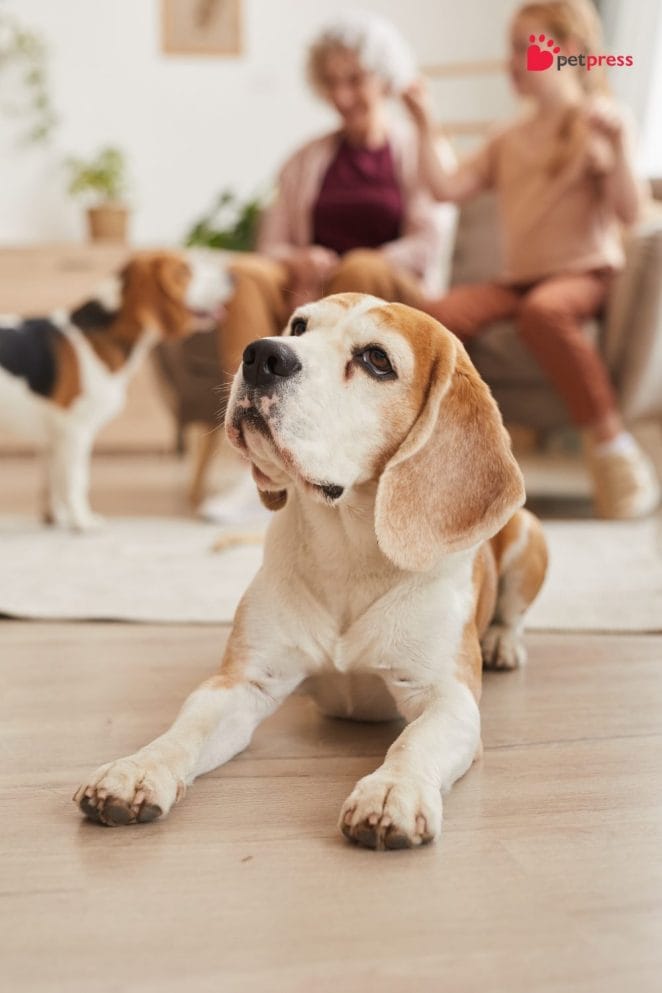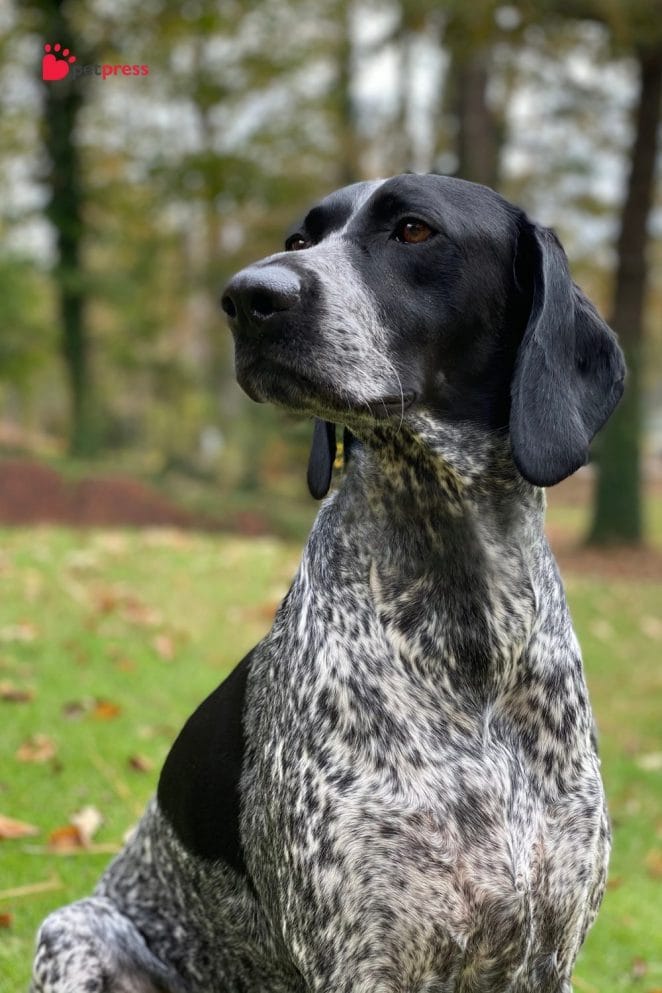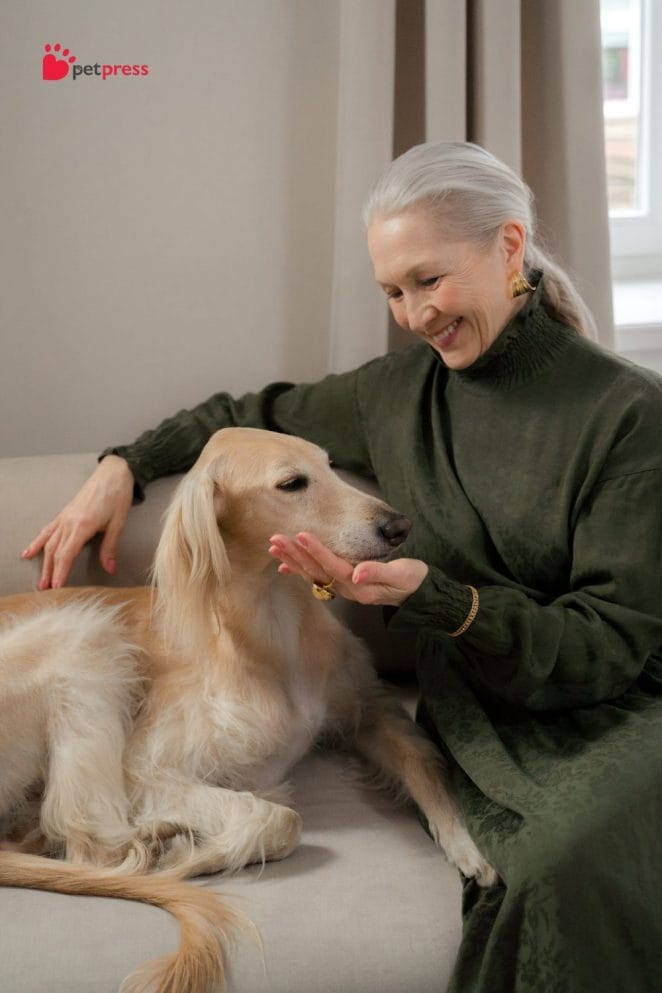
Moving to a new home can be a stressful experience, especially for our furry seniors. Ensuring we help a senior dog adjust to a new home is crucial for their comfort and happiness. It’s not just about a change of scenery. For an older dog, it’s about maintaining their health, safety, and well-being in a new environment that might initially seem daunting.
This transition requires a blend of patience, understanding, and specific strategies tailored to their needs. That’s why we’ve put together a helpful guide. Our aim is to provide pet owners with actionable, compassionate tips. These tips are not just advice; they’re a roadmap to easing your senior dog into their new home with love and care.
Dogs, especially in their golden years, thrive on consistency and comfort. As pet owners, it’s our responsibility to make their life transitions as smooth as possible. Let’s explore how we can make a significant difference in their lives with some thoughtful adjustments to help a senior dog adjust to a new home.
Join us as we dive into practical ways to ensure your senior dog feels right at home, ready to create new happy memories together.
Understanding Your Senior Dog’s Needs
Adjusting to a new home can be puzzling for senior dogs. Their comfort hinges on understanding and meeting their unique needs. It’s much like piecing together a puzzle, where patience and routine are the corner pieces that frame everything else.
The Importance of Patience and Routine
Senior dogs, with their treasure trove of quirks and comforts, thrive on routine. It’s their roadmap in a world that’s becoming increasingly hard to navigate. Here’s how you can pave the way:
- Maintain a consistent schedule for meals, walks, and bedtime. This predictability is a blanket of security for them, letting them know what to expect and when.
- Regular, gentle exercise keeps their joints limber and minds sharp. Short strolls or playful sessions in the garden can make a world of difference.
These steps aren’t just actions; they’re a dialogue, telling your dog, “You’re safe. You’re loved. We’re in this together.” It’s about crafting a rhythm to their day that sings a song of safety and familiarity.

Creating a Safe and Comfortable Space
Moving can unsettle even the most laid-back senior dog. That’s why creating a safe, snug corner is essential. Consider it their comfort zone, a haven from the hustle and bustle of unpacking and setting up.
Setting up a Cozy Rest Area
- Choose a quiet spot with minimal foot traffic. This will be their retreat.
- Lay down an orthopedic bed or thick, soft bedding. It’s all about joint support and comfort.
- Ensure the area is draft-free and maintains a comfortable temperature.
Creating this cozy nook sends a message to your senior dog: “You are safe here.“
Keeping Familiar Items Close
- Place their favorite toys, blankets, and even their old bed in this new area.
- Having well-loved items near them can significantly ease their anxiety.
- A familiar scent in a new place works wonders for their sense of security.
It’s like packing a piece of their old home into the new one. Suddenly, the unfamiliar is not so daunting anymore.
Creating a safe and comfortable space for your senior dog is more than just physical adjustments.

Introducing New Routines and Surroundings Slowly
Adjusting to a new home can be bewildering for a senior dog. It’s like stepping into a whole new world for them. That’s why introducing them to new areas of their home and neighborhood needs to be a gradual process. Taking small steps can make a big difference in helping them feel secure and loved.
Strategies for a Smooth Transition:
- Start with a Quiet Room: Begin their exploration in a calm, quiet room. Let them get familiar at their own pace.
- Use Leashed Walks Indoors: Initially, guide them on a leash through different parts of the home to ensure they feel safe and supported.
- Short Visits: Introduce them to new rooms one at a time. Short visits prevent overwhelming them.
Moving outside, the big wide world can be intimidating. Here’s how to make it less scary:
- First Walks in the Neighborhood: Keep the first few walks short and sweet. Aim for quiet times of the day.
- Positive Reinforcement: Bring along their favorite treats for encouragement. Praise them generously to boost their confidence.
- Familiar Routes: Stick to the same route initially. Familiarity breeds comfort.

The Power of Positive Experiences:
Building confidence in your senior dog is like laying bricks to pave their path to adjustment. Each positive experience outside is a brick laid. Whether it’s a calm greeting from a neighbor or a gentle stroll in the park, these moments reassure them that the world, though new, is a friendly place.
Remember, patience is key. Every dog adjusts at their own pace. Celebrate the small victories and enjoy this journey of discovery with your senior companion.
Socialization and Companionship
Welcoming a senior dog into a new home means more than just a change of address. It’s about weaving them into the fabric of your daily life and the community around you. Here, we’ll share some gentle, effective ways to help your senior buddy make new friends, both furry and human, while reinforcing the bond you share.
- Start Slow: Begin with short, positive interactions. A quiet meet-and-greet with a neighbor or a calm pet can set the right tone.
- Frequent, Short Walks: These can be delightful opportunities for your dog to explore and meet others at their own pace.
- Senior Dog Playdates: Arrange playdates with dogs of similar age and energy levels. It ensures they can interact without getting overwhelmed.
Spending quality time together is the cornerstone of comfort and happiness in your dog’s life. Whether it’s cuddle time on the couch or a gentle stroll in the park, these moments are golden. They reinforce the safety and love your dog feels in their new surroundings.
- Daily Rituals: Create routines around activities your dog enjoys, like walking in the park, morning brushes or bedtime stories.
- Learn Together: Engage in low-intensity training to learn new tricks or commands. It’s a great way to stimulate their mind and enhance your bond.
Remember, the goal is to make each new interaction a positive, stress-free experience. Use treats, praise, and plenty of patience to encourage and reward your senior dog.

Conclusion
We’ve explored several vital steps to help a senior dog adjust to a new home, ensuring their golden years are filled with comfort and joy. Remember, patience and routine are your best friends during this transition. Keeping their environment consistent and familiar helps them feel secure and loved.
Addressing health and mobility with thoughtful adjustments to your home can make a big difference in their daily life. Moreover, gently introducing them to new spaces and faces ensures they grow confident and comfortable in their new surroundings. Never underestimate the power of companionship; spending quality time together strengthens your bond and supports their adjustment.
Adjusting to a new home is a journey for you and your senior dog. It requires understanding, patience, and lots of love. Every effort you make helps write a beautiful new chapter in their life story. Share your journey and tips on social media to inspire and assist fellow dog lovers through similar transitions. Together, we can make a difference in the lives of our cherished senior companions.
FAQ: Help a Senior Dog Adjust to a New Home
It typically takes a senior dog between two to six weeks to adjust to a new home. Patience is key; remember, each dog is unique, and some may need a little extra time to feel completely at ease.
The best approach is to gradually introduce your senior dog to the new home. Start with one room—their designated comfort zone—and slowly expand their exploration area as they become more confident.
Introduce them slowly and in a controlled environment. Short, supervised meetings can help build a positive relationship between pets. Always ensure your senior dog has a safe, quiet space to retreat to if they feel overwhelmed.
Signs of adjustment include displaying their usual habits and behaviors, showing interest in exploring their new surroundings and returning to their normal eating and sleeping patterns. When they start to seem relaxed and at ease, you’ll know they’ve adjusted.
Yes, a change in environment can impact a senior dog’s health, causing stress that might lead to changes in appetite or behavior. It’s essential to monitor their health closely during the transition and consult a vet if you notice any concerning changes.


GIPHY App Key not set. Please check settings